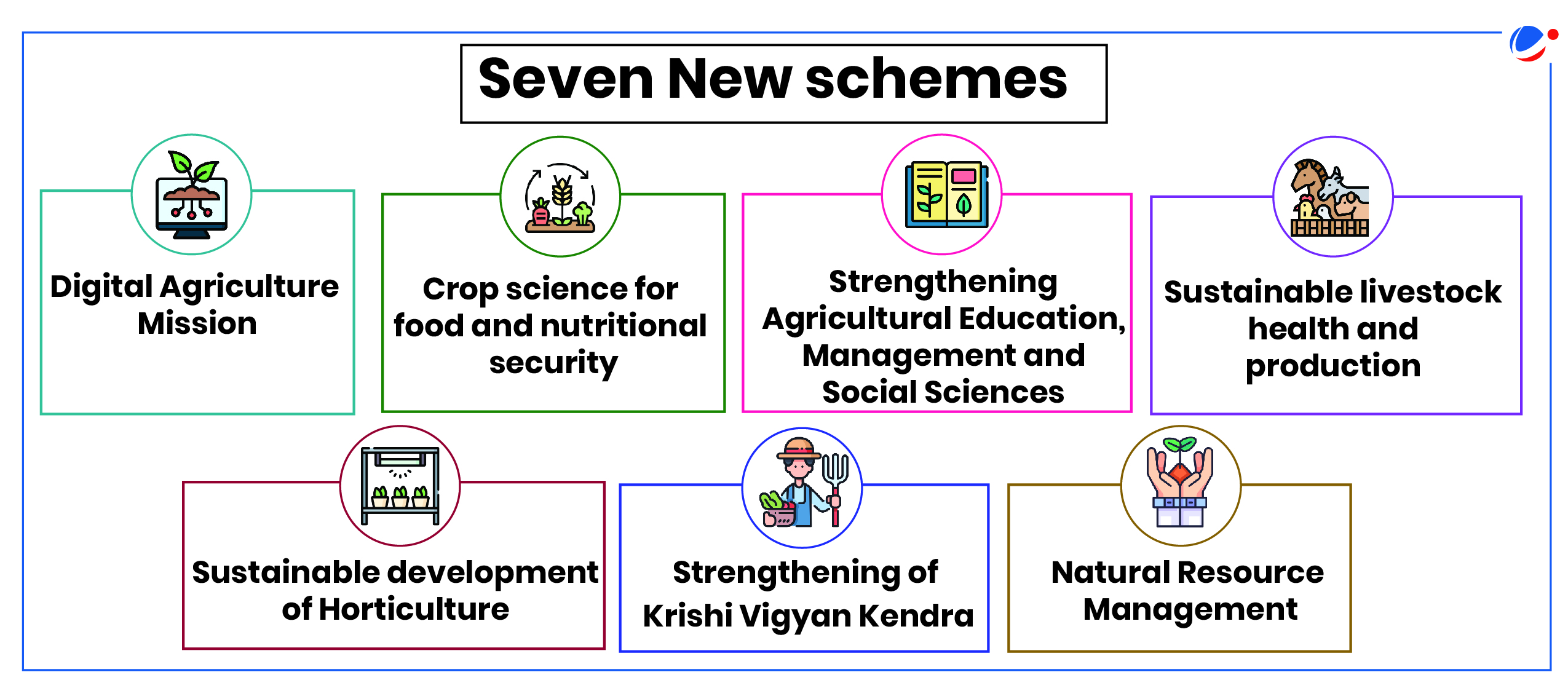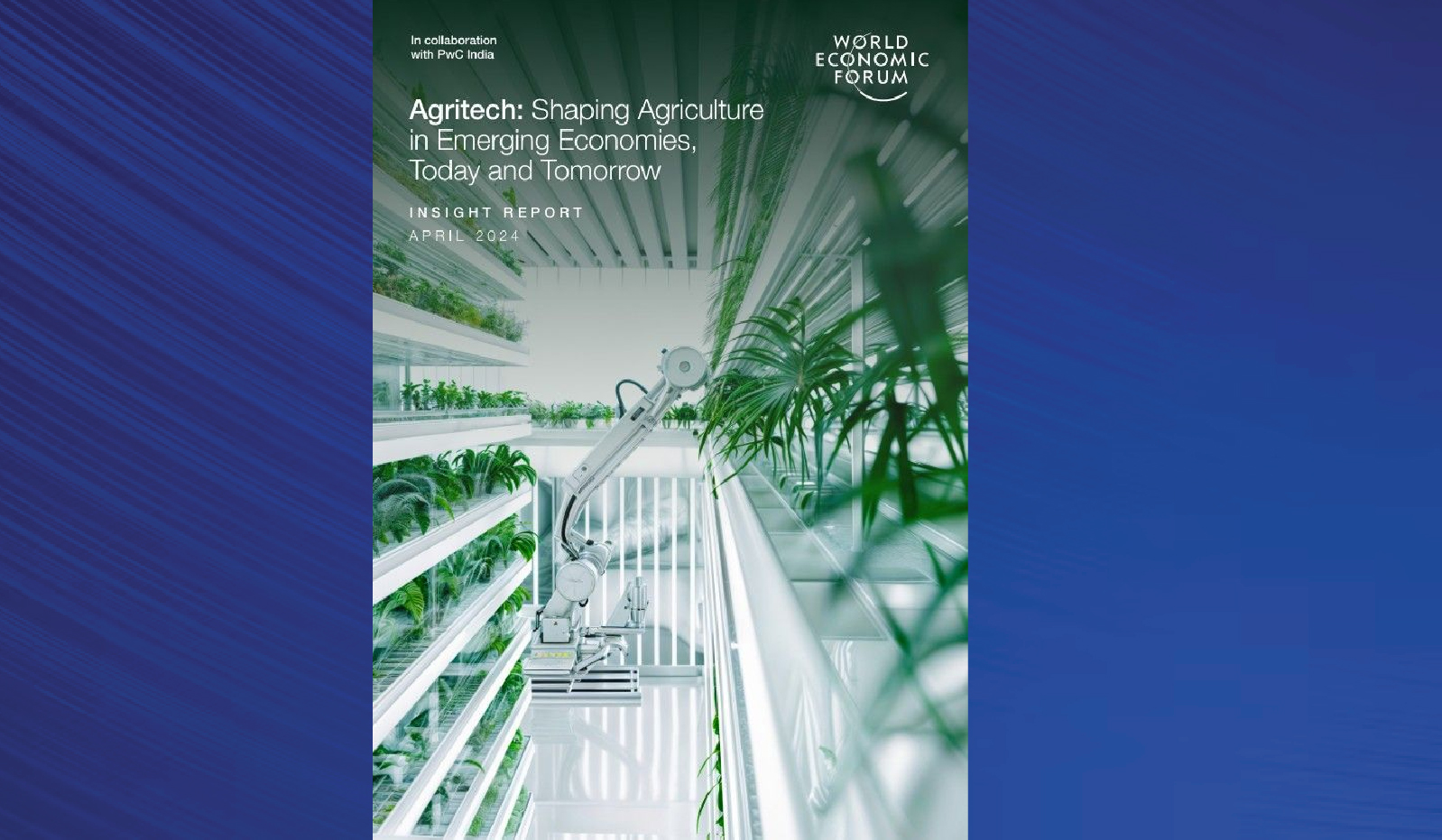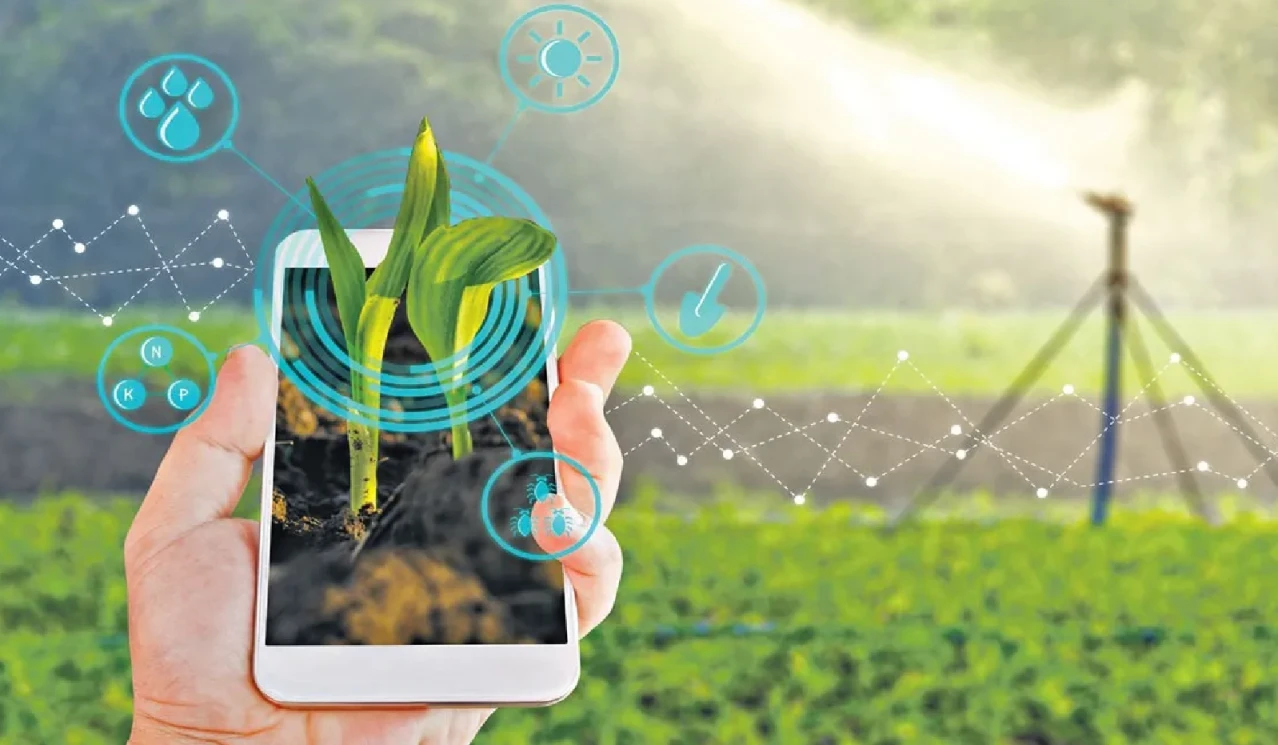Why in the news?
Cabinet approves seven major schemes for improving farmers' lives and livelihoods with total outlay of Rs 14,235.30 Crore.

Click to know more about Digital Agriculture Mission, Livestock Sector and Horticulture Sector.
Current Status of Farmer's lives and livelihood
- Economic Survey 2022-23 notes that 65 per cent (2021 data) of the country's population lives in the rural areas and 47 per cent of the population is dependent on agriculture for livelihood.
- Average monthly income of Indian farmers was Rs. 10,218 in 2018-19.
Issues/Constraints in increasing livelihood of farmers
- Technological Issues:
- Use of outdated and inappropriate technology due to lack of credit and low awareness.
- For instance, only 47% of agricultural activities are mechanized in India (lower than other developing countries such as China (60%) and Brazil (75%)).
- Issues in R&D: Agricultural research in country is constrained by resource inadequacy, regulations and intellectual property rights (IPR).
- India spends only 0.4% of agri GDP on R&D and it is far below the levels in China, Brazil, and Israel.
- Use of outdated and inappropriate technology due to lack of credit and low awareness.
- Agricultural credit: Access to institutional credit remains a constraint, especially in the case of tenant farmers.
- Issues related to Natural Resource management: Decline in soil organic matter, excessive fertilizer use, water scarcity, substantial area under rainfed agriculture, low water use efficiency etc.
- Supply chain related issues:
- Inadequate infrastructure: 30-35% of fruits and vegetables are lost at various stages of the supply chain, including harvesting, storage, grading, transport, packaging, and distribution.
- Barriers to exports: Non-tariff trade barriers like Sanitary and phytosanitary measures and stringent guidelines for import of agricultural and processed food products hampers India's exports.
- Low Productivity: E.g., As per FAO report, India's rice yield level still remains low at around 2.85 t/ha (China and Brazil have yield rates of 4.7 t/ha and 3.6 t/ha, respectively).
- Fragmented Landholdings, Poor Irrigation Facilities, Soil Degradation and Limited Access to Quality Inputs are some of the reasons behind it.
- Other issues:
- Erratic Climate: Government of India's economic survey (2018) estimated that the annual loss of US$ 9-10 billion was due to the adverse effects of climate change.
- Low price realization: There exists a large gap between farm harvest prices (FHP) and retail prices.
- Prices also tend to fall below the minimum support prices in a good production year, leading to agrarian distress.
How will New Schemes help in improving farmer's lives and livelihood?
- Leveraging technology:
- Digital Agriculture Mission will help in reducing potential yield loss through precision farming.
- Digital land map can help Identifying suitable land for agriculture, optimizing land use.
- Weather Forecasting and Climate Modeling helps to mitigate impact of extreme weather events and disasters.
- Crop science for food and nutritional security: It will promote-
- Development of high-yielding, disease-resistant, and climate-resilient crop varieties through traditional breeding techniques and modern biotechnological methods like genetic modification and gene editing (e.g., CRISPR).
- Bio fortification to address micronutrient deficiencies (hidden hunger) in populations.
- Digital Agriculture Mission will help in reducing potential yield loss through precision farming.
- Agriculture education and outreach:
- Strengthening Agricultural Education, Management and Social Sciences will help develop sound understanding of rural development theories.
- It will ensure strengthen policy formulation and implementation for improving rural infrastructure, credit facilities, market access, and social services.
- Strengthening of Krishi Vigyan Kendra (KVKs) will make quality technological products (seed, planting material, bio-agents, and livestock) available to farmers and organize frontline extension activities to improve lives of farmers.
- Strengthening Agricultural Education, Management and Social Sciences will help develop sound understanding of rural development theories.
- Special focus on sub-sectors: Schemes for livestock and horticulture sectors will help enhance productivity in these high yielding sectors in a sustainable manner.
- E.g., Sustainable livestock health and production focuses upon Dairy production and technology development, Animal genetic resource management, etc.
Other structural measures that can be taken: Recommendations of Ashok Dalwai Committee
- Enable farm owners to transit from status of cultivators to farm managers: By outsourcing all possible farm operations to achieve resource use efficiency and effective outcome.
- A system of professional service providers (including Original Equipment Manufacturers – OEMs) can be encouraged to take over responsibility for cultivation services such as pest management, irrigation management and harvest management etc.
- Redefining mandate of agriculture: To expand its horizon beyond currently predominant deliverables i.e. food and nutrition security, Agriculture should also be mandated to generate raw materials to support industrial enterprises e.g. chemicals, construction, energy, fibre, food, etc.
- Adopting Secondary agriculture: that promotes value addition activities by using farm generated natural resources other than principal yield.
- Adopting 'Fork to Farm' approach: By maximizing monetization possibilities by upgrading agro-logistics (storage & transportation), agro-processing and marketing.
- Increase Variety Replacement Ratio (VRR): Phase out old varieties of seeds and replace them with hybrid and improved seeds to enhance productivity for 128 agro-climatic zones of country.
- Water management: Efficient use of water through micro-irrigation, promoting ground water recharge and agro climate based cropping/production system.
- Diversification of Sector: Following shift in focus/emphasis is suggested-
- From major cereals (paddy & wheat) to nutri-cereals
- From only foodgrains (cereals + pulses) to fruits, vegetables and flowers
- From carbohydrates only to proteins (pulses)
- From only floral/vegetative proteins to floral + faunal/animal based proteins (eggs, milk, meat and fish)
- From field crops only to horticulture + dairy + livestock + fisheries, etc.





